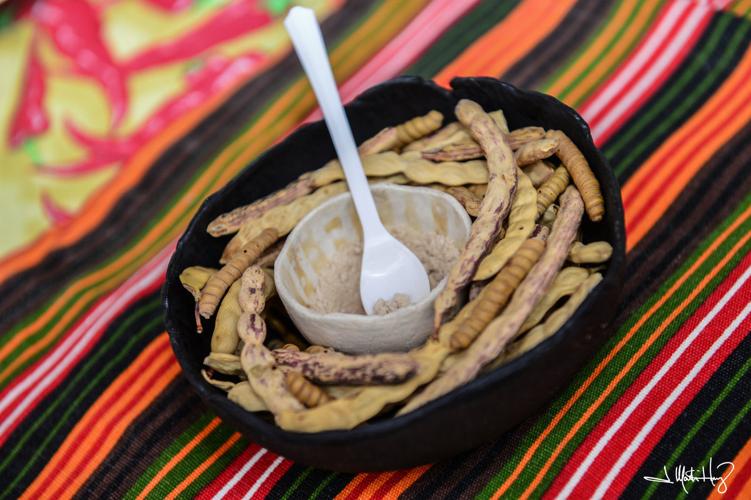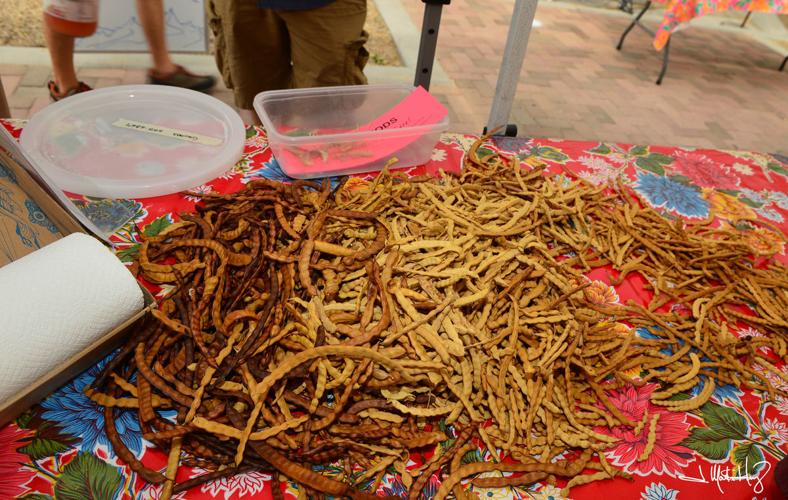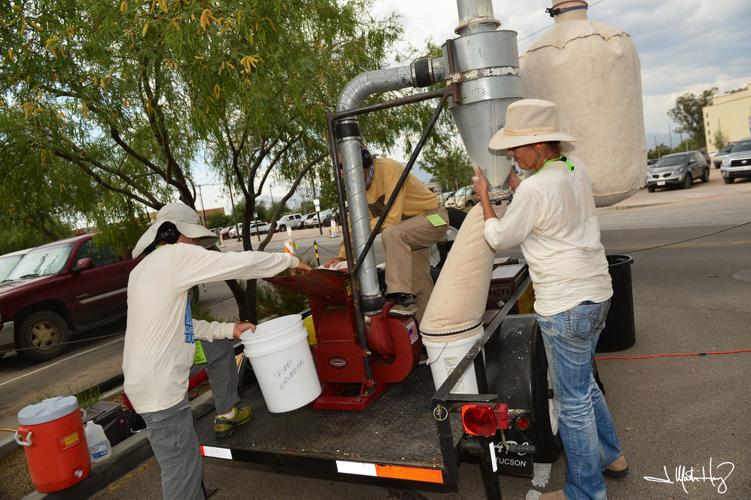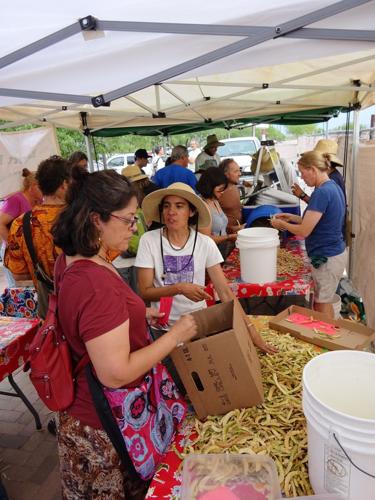Mesquite flour adds its sweet, delicately nutty, uniquely Arizonan flavor to everything it’s used in. But you’ll need to know a couple of things about it before you begin your mesquite flour journey.
First, because mesquite flour is gluten-free, it performs best when combined with another flour, such as all-purpose or whole wheat. While you can combine it with gluten-free baking mixes — substitute up to a cup of mesquite flour in baking mix recipes — it performs best when combined with wheat flours.
Second, mesquite flour is expensive. You may see it at various outlets around town — including the Food Conspiracy Food Co-op and Native Seed Search’s retail store — priced at $14 to $20 a pound.
With a little time and effort, however, you can save a good bit of money on mesquite flour by gathering the chubbiest pods you can find now and storing them in a dry sheltered area.
Baja Arizona Sustainable Agriculture (BASA) has open-to-the-public milling in conjunction with Desert Harvesters, a nonprofit dedicated to inspiring Southern Arizonans to rewild their backyards, gardens and neighborhoods.
Using BASA’s hammermill, Desert Harvesters will mill your mesquite pods into the valuable flour from 10 a.m. to 2 p.m. on Oct. 17, at the Sierra Vista Farmers Market, and from 9 a.m. to 1 p.m. on Oct. 19 at the Bisbee Farmers Market. Another milling is schedule for Tucson in November, but its date and time have not yet been set.
Jill Lorenzini and Barbara Rose, who are educators with Desert Harvesters, have tips for gathering mesquite pods to get ready for milling.
The first thing: Taste the pods first. “Flavors can vary quite a lot,” says Lorenzini. “You’re looking for a sweet flavor. Individual trees have different flavors. Some trees produce pods that are nutty or bitter or chalky.”
It’s best, the pair say, not to pick the pods up from the ground; picking them from trees is best. “When the pods are fully ripe, they should come right off in your hand,” she says. “You could place a tarp or cardboard on the group to catch them if you want to knock them off the tree.”
Don’t hesitate to gather pods that have a little hole in them, they say. There’s a little beetle that favors mesquite pods, but the hole is the sign that the beetle has bored its way out.
There are more harvesting tips on Desert Harvesters’ website, www.desertharvesters.org.
Storage conditions are important, notes Rose. There is a risk of aflatoxin, a toxic compound produced by molds which also afflicts dry peanuts if the pods are stored in humid, cool temperatures, she says. Keep the pods somewhere where they stay dry and are protected from insects. The mold is invisible, but experienced Desert Harvesters volunteers will inspect the pods before milling to be sure they’re safe. The volunteers will also sort out any other materials that could harm the hammermill, such as stones or screws or nails.
One person can easily pick 5 gallons of whole pods in about an hour and a half, she says, and will spend another 20 to 30 minutes sorting and laying the pods out to dry. That 5-gallon bucket will contain about 7 pounds of pods, which will mill into about 5 pounds of flour. Desert Harvesters charges $3 a pound for the milling service.
Rose says she uses mesquite pods in other ways. “I harvest them, slightly toast them, and then cook them in water until the fiber and seeds separate from the broth,” she says. “I use that as a broth, a tea, or cook it to reduce it down like apple butter. Let it cool and mush it through a strainer, and you’re good to go.”
There are other ideas in Desert Harvesters’ new cookbook, “Eat Mesquite and More,” available on the website, as well as ideas for using other foods native to the Sonoran Desert.
Mesquite flour makes superb pancakes, and it’s very good in cookies. I tried mesquite flour in this lovely yellow cake, where its subtle, nutty flavor gave the cake some complexity. I found the cake sweet enough on its own to need nothing further than a generous dusting with confectioners sugar, but you can also ice it with your favorite frosting.
Next week: Now that grapes are ready to harvest in southern Arizona, what am I going to do with my seasonal riches?
Basic Yellow Mesquite Cake
Recipe courtesy Desert Tropicals via Desert Harvesters
Makes a 9-inch, two-layer cake.
Mesquite flour will give a delicate and distinctive flavor to your cakes.
Ingredients
2 1/4 cups flour
3/4 cup mesquite flour
2 1/2 teaspoons baking powder
1 1/2 teaspoons salt
3/4 cup oil
1 1/3 cup sugar
2 teaspoons vanilla extract
1 1/3 cup milk
Preparation
Preheat the oven to 350 degrees. Grease and flour two 9-inch round cake pans and set them aside.
Sift the flours, baking powder and salt into a large bowl.
In a separate bowl, beat the sugar, vanilla and oil. Slowly add the sugar mixture to the flour mixture, stirring carefully. Stir in the milk and beat until smooth.
Divide the batter between the two prepared cake pans. Bake for 30 minutes, or until a pick inserted in the middle of the layers comes out clean. Let the cake layers cool on a rack until fully cool before icing the cake with your favorite frosting.







